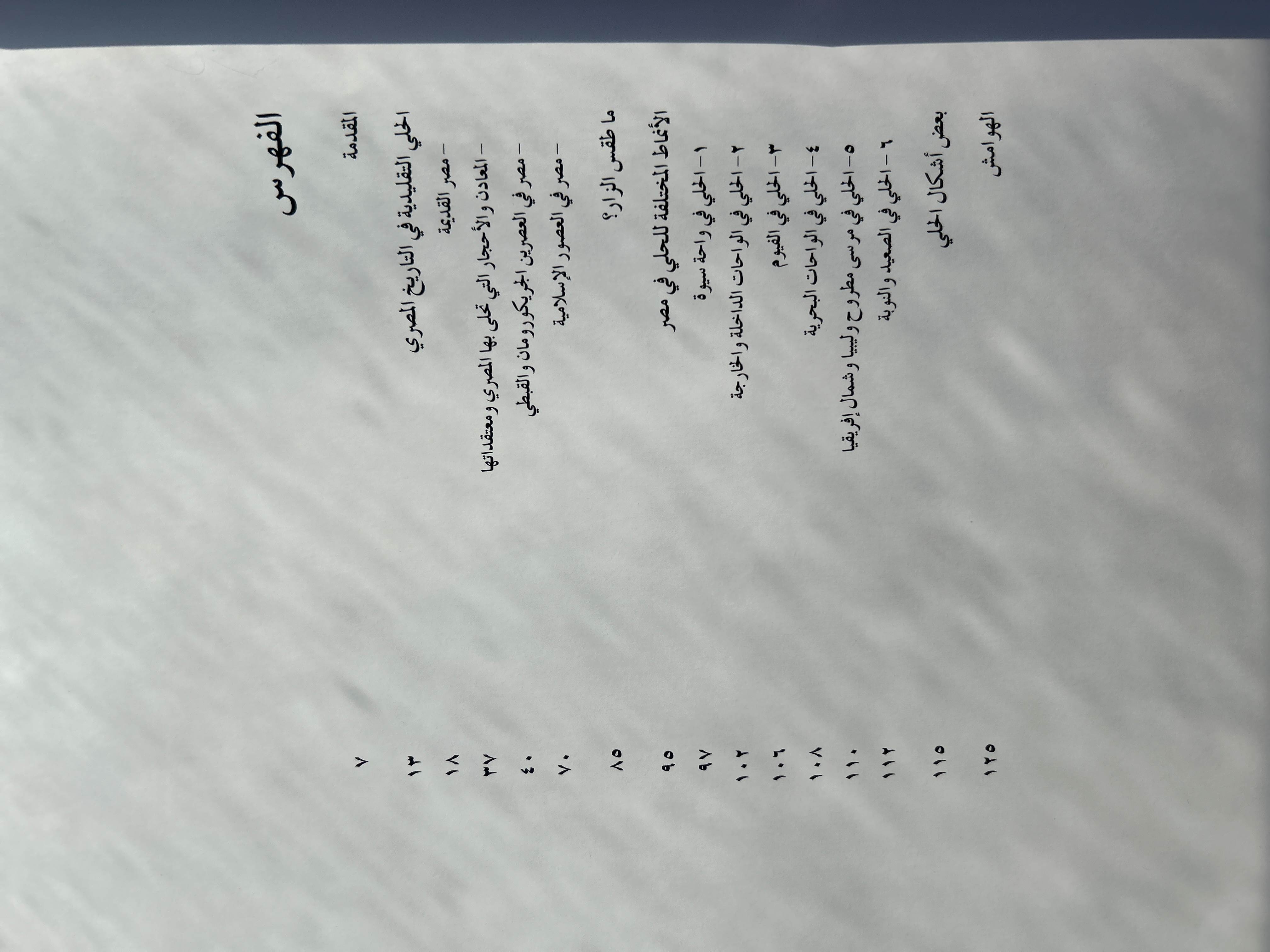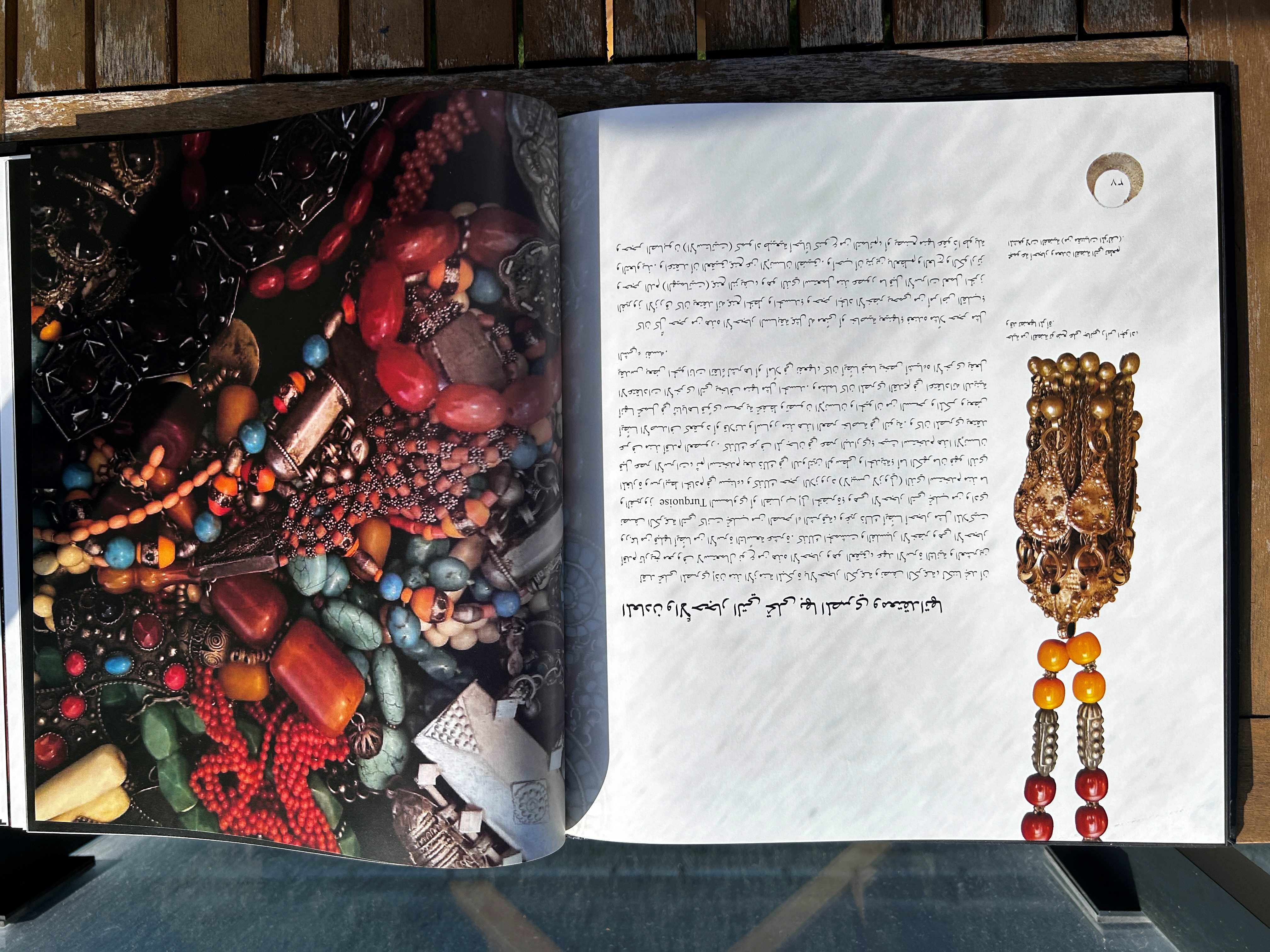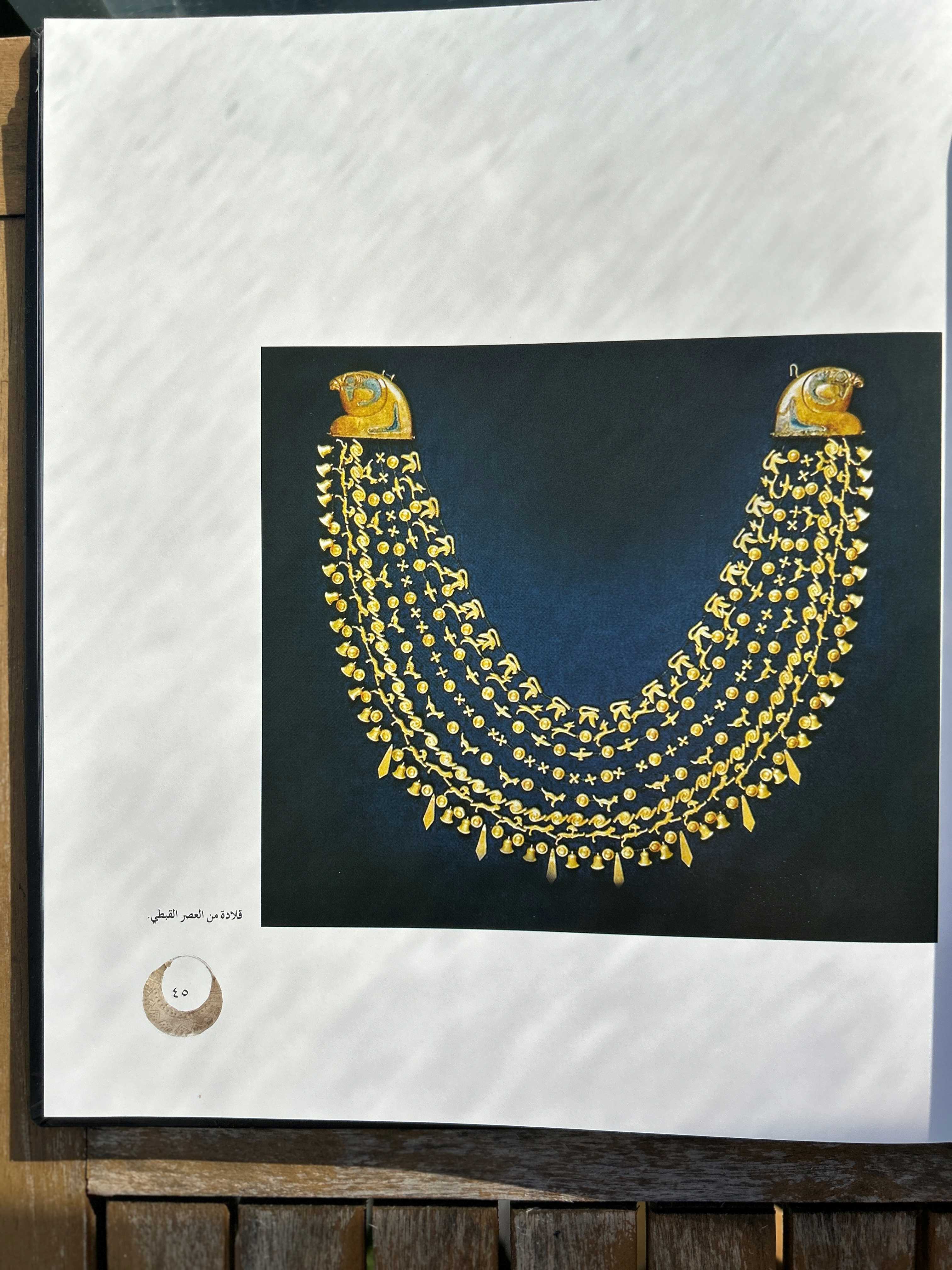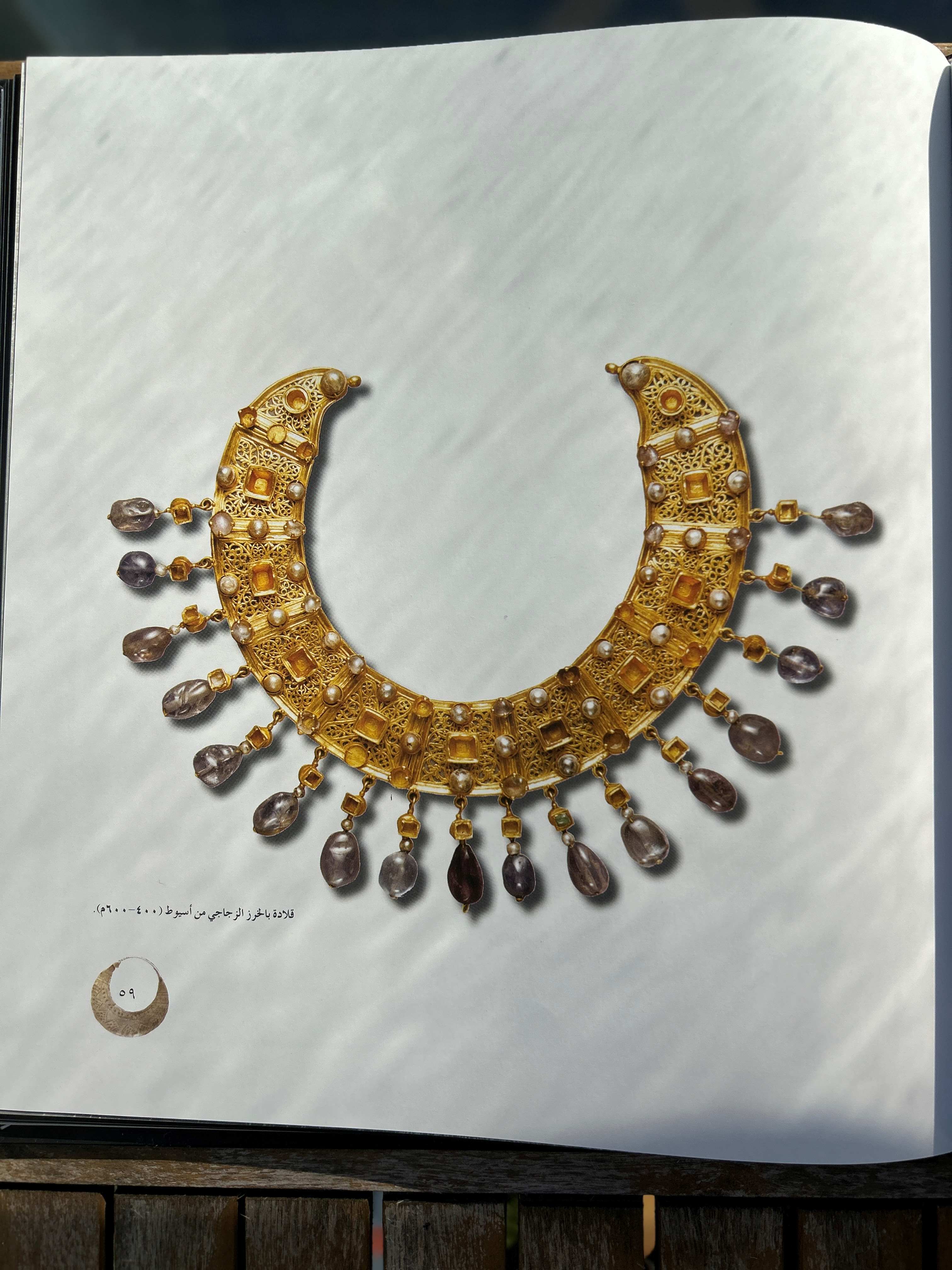Overview:
Written by Dr. Yousria Abdel Aziz Hosny, this book provides an overview of the traditional and historical jewellery of Egypt. Over 125 pages, the book illustrates the history, materials, meaning behind them and the specific types of jewellery in each region of Egypt. The book also describes Zar, examining its potential origins and the specific jewellery worn during the peculiar ceremony.
The first half of the book follows the trajectory of jewellery in Egypt from the prehistoric ages to the dawn of Islam. Dr Yousria discusses the adoption of jewellery by the different classes of society, its use to ward off evil spirits or attract a certain type of energy, and its function to preserve wealth. Yousria provides both cultural and historical contexts and notes that much of the jewellery that survives from ancient Egypt comes from tombs.
Dr Yousria notes that very little of the traditional styles of ancient Egypt survived to the wardrobe of the modern day. But I couldn’t help but notice the continuity of some symbols such as the sphinx and Horus eye, that have carried through in the sha’bi and fallahi. Reading this book with the context provided in Azza Fahmy’s book, we can also see some similar silhouettes for earrings and bib-like necklaces, which we see an example of in this book from Assyut in the 400s.
Content highlights
The book includes a wide and diverse collection of images that showcase examples of jewellery from all parts of Egypt. Many of the pieces come from the author’s collection, which she has been expanding for over three decades. The Zar chapter details the history and components of the ceremony, showcasing the different types of necklaces and amulets worn by the participants.
Even though the book is brief, Dr Yousria connects Egypt to the bigger tapestry of the Middle East, highlighting styles that spread through travel and trade. Ancient Egyptians imported gold, ivory, and ebony from the mythical land of Punt. They also traded with Europe, the Arabian Peninsula and Asia, bringing materials such as lapis lazuli from Badakhshan.
And even though the book is brief, it follows the evolution of certain styles like the shiftishi (filigree) through time. Dr Yousria masterfully narrates the history from the time ancient Egyptians used the style to when it resurfaced with the Arab conquest.
Format & layout:
- Hardcover
- 15 pages
- ISBN: 978-977-452-555-6
- Arabic






